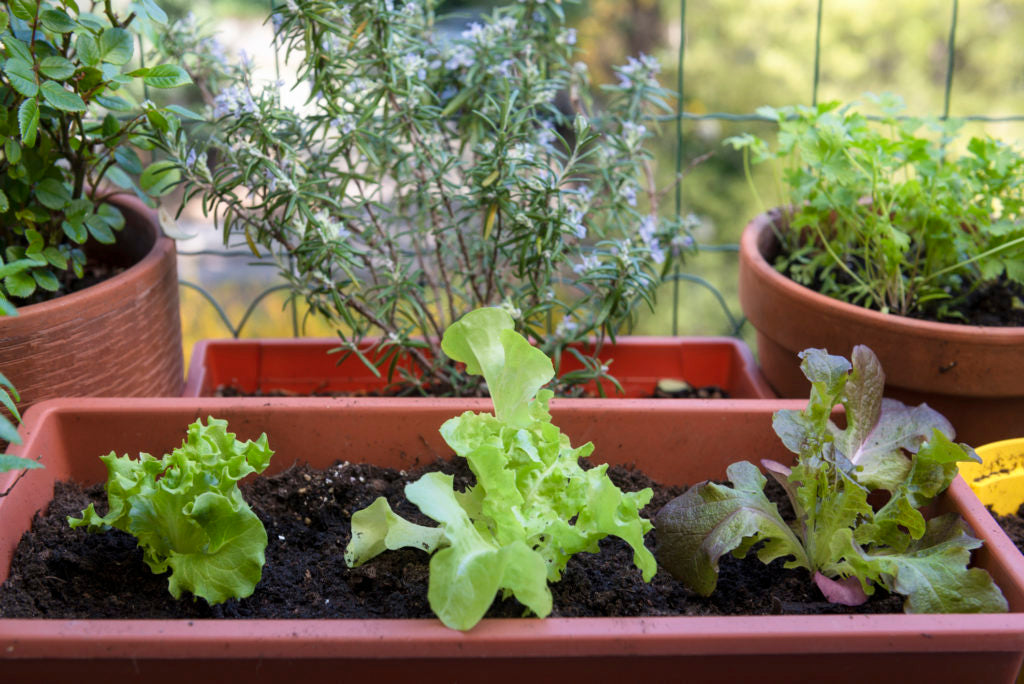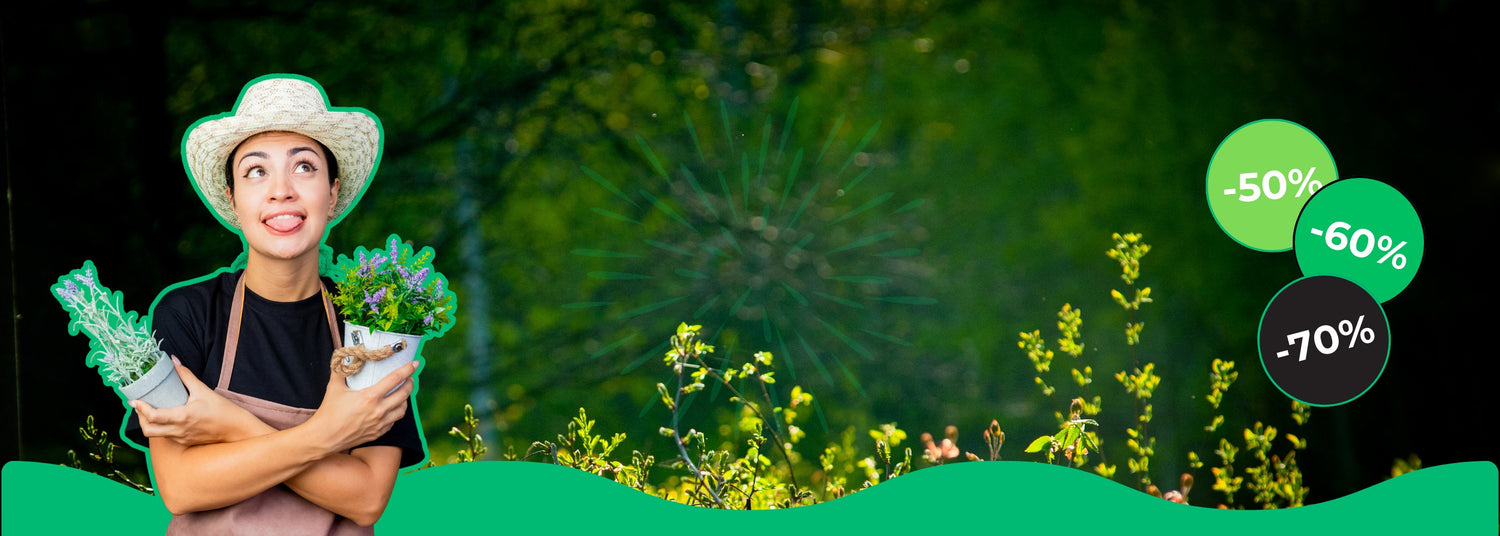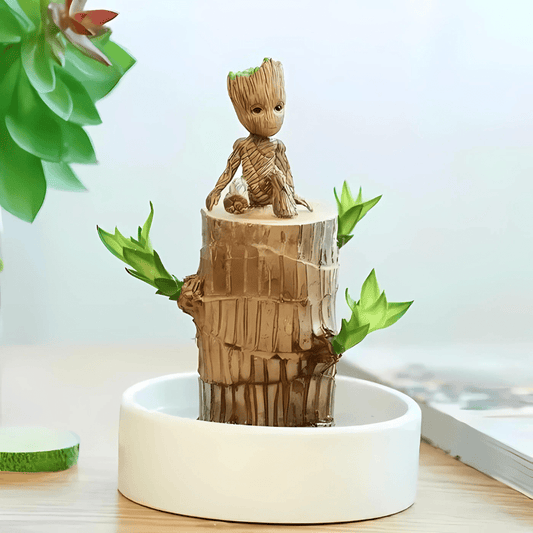Container Gardening: Growing Vegetables in Pots

If growing your own vegetables and herbs sounds appealing but you don't have a lot of space, containers are a viable alternative to the traditional vegetable garden.
All you need is a balcony, deck, patio, or other small space that receives at least 6 hours of direct sunlight. There are many reasons to grow your own food in containers:
- Home grown produce tastes better than store bought and is often more nutritious.
- Container vegetables are more accessible, usually grown right on your doorstep.
- Some vegetables grow better in containers, while others don't do well at all.
- By choosing the right vegetable varieties and following a few basic tips, you can quickly start growing and harvesting your own fresh foods at home.

START YOUR CONTAINER VEGETABLE GARDEN
Evaluate your space:
- Make sure your site gets enough light by observing how the sun moves throughout the day.
- In warmer climates, plants may require afternoon shade so they don't overheat.
- Measure the space to ensure there is enough room for the necessary containers.
- To maximize the use of your space, include plants that grow vertically like peas, climbing beans and cucumbers.
- Make sure there is a convenient water source nearby.
Make a plan :
- Draw a quick sketch to calculate how many containers you will need and what sizes. Make a list of supplies, including containers, soil, gardening tools, seeds, plants, watering supplies, fertilizer, and plant supports like trellises and cages.
Choosing what you are going to grow:
- Make a wish list of what you would like to grow, focusing on what you are most likely to eat. Limit yourself to what you have time and space to grow and include easier varieties like lettuce and radish to maximize your success.
- (Tip: When looking at catalogs, online sources, and plant labels, look for descriptive terms such as dwarf, compact, patio, bush, and space saver, which indicate smaller varieties suitable for containers.)
Seeds vs. plants:
- Fast-growing plants like lettuce, bush beans and peas are easy to grow from seed. Plants that take longer to mature, such as tomatoes, peppers and eggplants, are best grown from nursery stock.
Choosing containers:
- Almost anything can serve as a container as long as it is large enough, has good drainage, and is made of food-safe material. Here are some tips for choosing containers:
- Shallow-rooted vegetables like leafy greens and radishes require less space than deep-rooted plants like tomatoes and peppers.
- Large pots are preferable because they don't dry out as quickly and provide plenty of room for roots to develop.
- Choose containers at least 30 cm high and deep, such as plastic pots of 20 liters or more, wooden planters, or half whiskey barrels.
- Avoid terracotta or clay pots, which dry quickly because they allow water to evaporate through the sides of the pot.
- Also avoid metal and dark-colored containers (like black plastic nursery pots), which can get too hot, causing the roots to overheat.
THE BASICS OF CONTAINER GARDENING FOR VEGETABLES
Container gardening is a great solution for growing your own vegetables even with limited space. Here are the essential elements to consider for a successful container vegetable garden.
Light :
Most vegetables require at least 6 to 8 hours of full sun per day, while some varieties like lettuce tolerate shade better.
Temperature :
Learn about the temperature requirements of each vegetable before planting.
- Cool weather plants: Vegetables like leafy greens and peas can be planted earlier in the season. The soil temperature should be at least 4 to 10 degrees Celsius.
- Mid-season plants: Carrots and potatoes can be planted in mid-spring.
- Warm Weather Plants: Peppers and tomatoes should wait until late spring when soil temperatures are at least 21 degrees Celsius.
Water :
Vegetables require constant humidity. Containers dry out more quickly than plants in the ground, so they need to be watered more often. As a general rule of thumb, water 2 to 3 times per week in summer and daily during hot weather. Sun exposure, humidity and container size influence how quickly the soil dries. If the soil is dry about 2 to 5 cm below the surface, it is time to water. Using a drip irrigation system can help maintain regular watering.
Sun :
Use a high-quality organic potting soil, filling the container to within 2 to 5 cm of the rim. The soil will settle over the growing season. Do not use garden soil, as it can compact, leading to poor drainage and root rot.
Fertilizers and amendments:
Most vegetables are nutrient-dense. Fertilizers leach quickly from containers due to frequent watering, so adequate fertilization is crucial for productivity. When planting, add a slow-release organic granular fertilizer and mulch with compost or manure. Supplement with a liquid fertilizer made from fish emulsion, seaweed or compost tea every two weeks.
BEST VEGETABLES TO GROW IN POTS
Growing vegetables in pots is a great solution for those with limited space. Here's a list of the best vegetables to grow in containers, with recommended varieties and tips for each type.
1. Tomatoes 🍅
Tomatoes love heat and need plenty of space for root development. Provide a trellis or tomato cage at planting time.
- Varieties to try: Opt for compact varieties of cherry tomatoes like Tempting Tomatoes® Patio Sunshine or Goodhearted® for heavy production over a long period. Other container-friendly varieties include ‘Balcony’, ‘Bushsteak’, and ‘Early Girl Bush’. ‘Tumbler’ and ‘Tiny Tim’ grow well in hanging baskets.
2. Peppers 🌶
Peppers often grow better in containers than in the ground. They are best grown from seedlings. Choose from the types you like to eat, such as hot, chili, jalapeño, or mild peppers.
- Varieties to try: Good container varieties include 'Poblano' and 'Shishito'. Fire Away® Hot and Heavy is a compact strain with a moderately spicy taste.

3. Beans 🌱
Dwarf beans are easier to grow than climbing beans, but both can be grown in containers. Replant bush beans every two weeks for a continuous harvest. Provide a trellis for climbing beans at planting time.
- Varieties to try: Best container varieties include 'French Mascotte' and 'Roma' bush beans, and 'Kentucky Wonder' and 'Blue Lake' climbing beans '.

4. Carrots 🥕
This root often grows better in containers than in the ground because there are fewer soil problems that hinder root development. Containers should be at least twice as deep as the mature length of the variety being grown.
- Varieties to try: Plant round or miniature carrot varieties such as 'Little Finger', 'Parisian Market', 'Thumbelina', and Chantenay types, which have shorter roots and mature more quickly.

5. Eggplant 🍆
Eggplants, best grown from plants, often grow better in pots than in the ground. Allow one plant per square foot and provide a trellis or tomato cage to prevent the plants from tipping over under the weight of the fruit.
- Varieties to try: Choose compact or miniature varieties like 'Bambino,' 'Fairy Tale,' 'Little Fingers,' or 'Patio Baby.'

6. Leafy vegetables 🌿
Some of the easiest vegetables to grow in containers include arugula, bok choy, endive, lettuce, mustard and spinach. They require less space than most other vegetables. Re-sow fast-growing varieties like lettuce every fortnight for a continuous harvest through spring and fall.
- Varieties to Try: Choose from many leafy green mixes to grow a wide variety in a small space.

7. Yes 🌱
Start these cool weather plants from seed in early spring or late summer and provide vertical support such as a bamboo teepee at planting time. These legumes fix nitrogen in the soil, providing a nutrient-rich environment for the next crop. Once they finish producing in late spring, replace them with warm weather vegetables like cucumber or eggplant.
- Varieties to try: Grow dwarf or bush types such as 'Snowbird,' 'Little Marvel,' 'Little Crunch,' or 'Oregon Sugar Pod.'






































